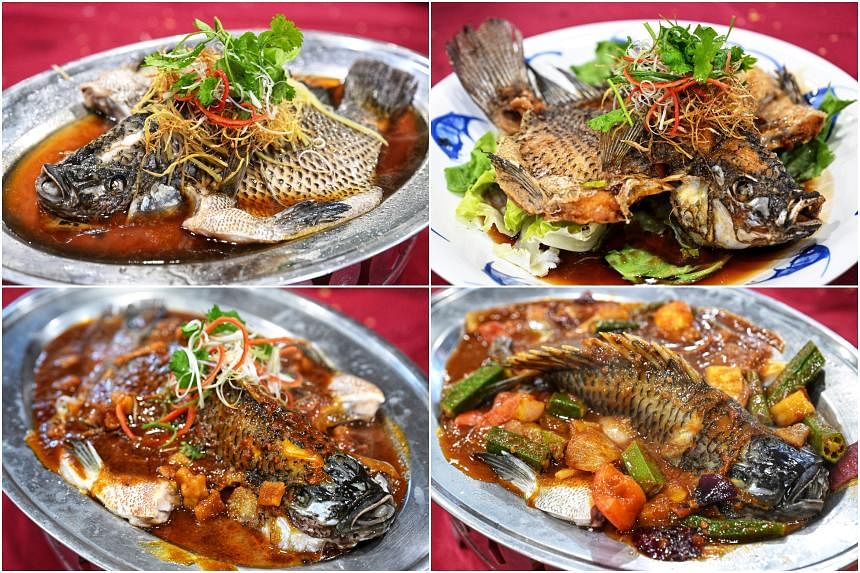SINGAPORE – Two more fish farms have joined pioneer Heng Heng Fish Farm in producing marine tilapia, a hardy and fast-growing food fish.
By using more sustainable farming methods such as food pellets, which are less polluting than expired bread, and by farming the fish in salt water instead of fresh water, Millenia Farm and Grand Pacific Fishery hope to make tilapia – often shunned by consumers because of its “muddy” taste – a more palatable choice.
Indeed, when The Straits Times tried the four marine tilapia dishes cooked by a foodcourt stall in Yew Tee Square, the textural contrast between the marine tilapia’s firm bite and its delicate sweetness and its freshwater counterpart was evident.
The farms are part of a national effort to transform Singapore’s aquaculture sector into one that is productive, climate-resilient and resource-efficient, with the Government working with industry players to find innovative ways to grow more with less.
Tilapia, for instance, takes up to seven months to grow and costs less than half the price of barramundi (Asian sea bass), which takes 1½ years.
The three farms – the first to join the Singapore Agro-Food Enterprises Federation (Safef) – are adopting more sustainable practices set out in the Good Aquaculture Practice for Fish Farming (GAP-FF). This is a set of guidelines established by the Singapore Food Agency (SFA) to ensure safe and quality fish farming.
Safef has been trying to raise the productivity and farming standards of coastal fish farms, as well reducing the environmental impact of these farms along the Johor Strait, which makes up the majority of aquaculture farms here.
For Mr Ken Cheong, who took over as chief executive officer of Safef in mid-2023, his priority has been to ensure the business viability of farms in the Johor Strait.
One of the first things Safef had to do was to ensure that all three farms that had joined the federation switch to pellet food. Expired bread and baked goods, which are cheaper than protein-rich pellets, are often fed to fish but pollute the saltwater environment and lower oxygen levels, which makes the environment unhealthier for fish.
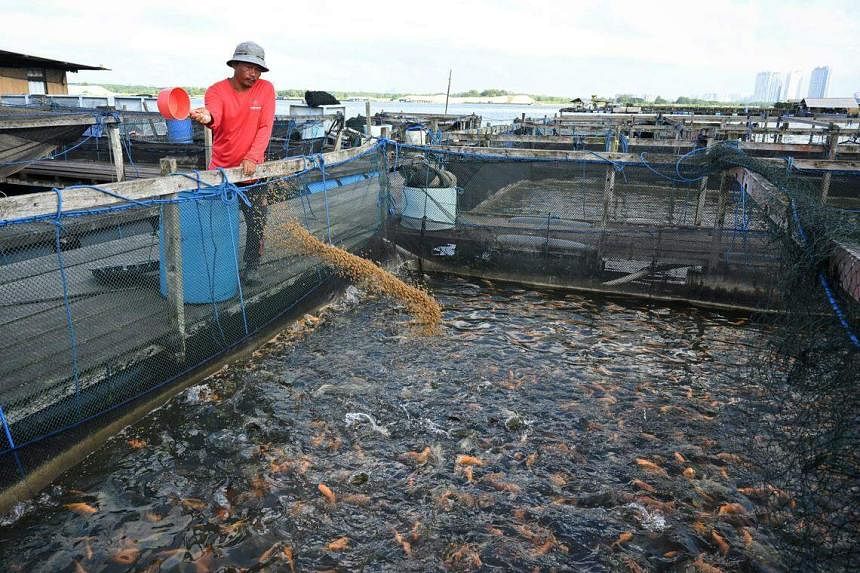
Heng Heng Fish Farm’s owner, Mr Yeo King Kwee, switched fully to pellets in November 2023. While this costs more, Mr Yeo, 63, said marine tilapia grows faster when fed pellets.
He estimates that his farm can produce up to 350 tonnes of marine tilapia per year by end-2024, as compared with 180 to 200 tonnes per year before he had fully switched to pelleted feed.
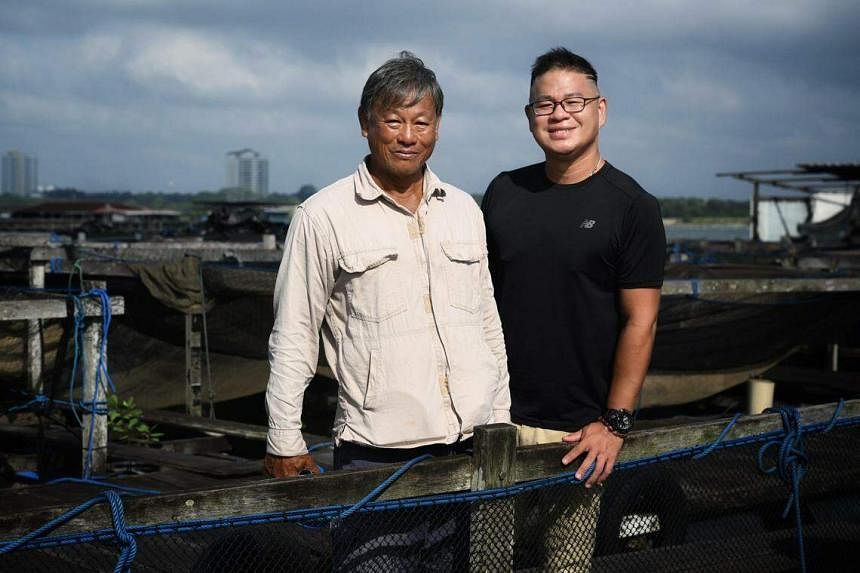
Singapore’s goal is to produce at least 30 per cent of its food needs locally by 2030. According to SFA, it produces 7.6 per cent of seafood, amounting to about four thousand tonnes as at 2022.
Millenia Farm and Grand Pacific Fishery started rearing marine tilapia in June 2023.
“We cannot wait any longer! Let’s start farming marine tilapia,” fish farmer Heng Chun Kwang, 61, told his business partner, Mr Mak Wah Weng, 60, in Mandarin when he heard that local tilapia – generally bred in fresh water, can be acclimated to salt water in West Johor Strait – so it does not have any muddy taste.
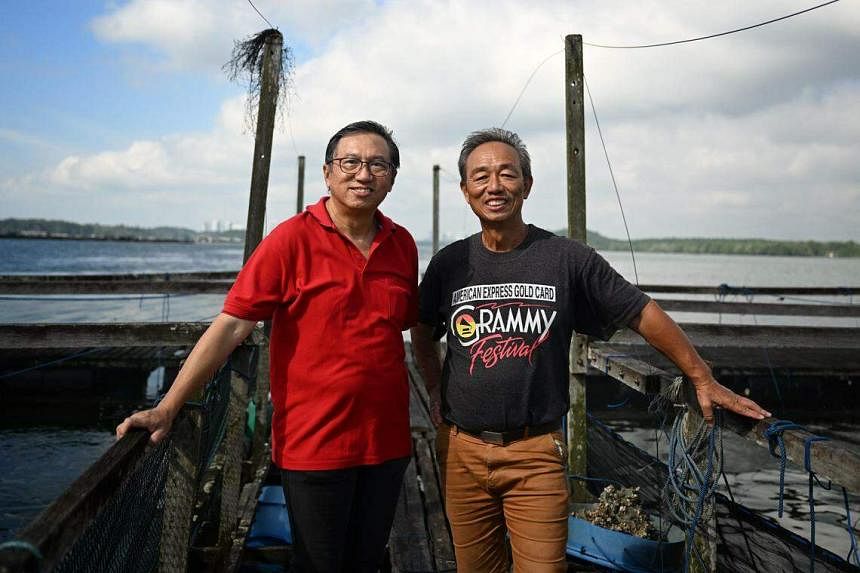
They are directors of Millenia Farm.
Millenia Farm is currently producing one to two tonnes of tilapia a month. It is hoping to ramp up and produce 50 tonnes of tilapia a year by end-2024 and 100 tonnes of tilapia a year by end-2025.
Mr Phillip Nien, director of Grand Pacific Fishery, estimates that he will be able to produce 15 tonnes of tilapia per month, starting August 2024.
Mr Nien, 62, who currently has four saltwater tilapia ponds in Lim Chu Kang, intends to convert two more ponds for the fish.
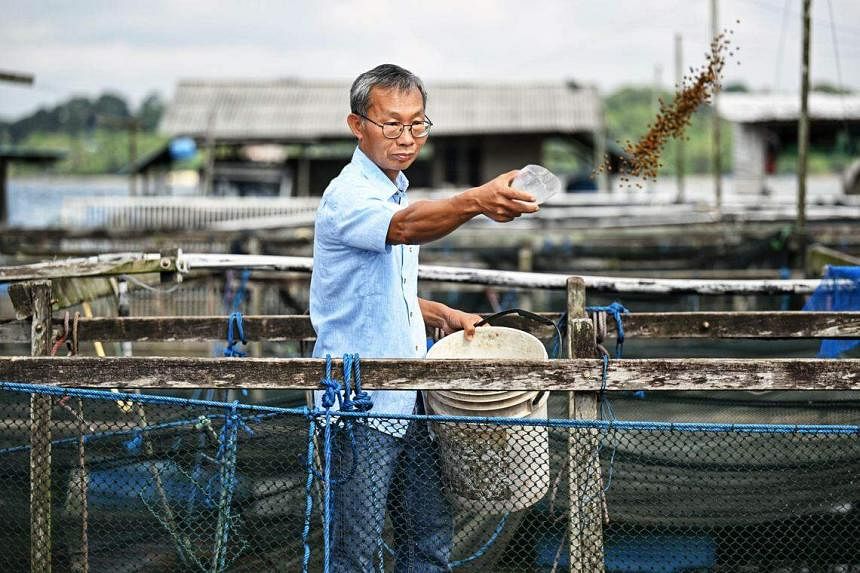
Safef’s Mr Cheong meets the owners regularly to coordinate and plan the production and supply of tilapia from the three farms.
Safef sends the tilapia feed to a local food testing lab to test for safety and basic nutrition levels. At the same time, Safef staff help the farmers to conduct record-keeping of important data such as amounts of tilapia stocks, amounts of dispensed feed and the mortality rate.
This data is sent to scientists and researchers at Temasek Polytechnic’s Aquaculture Innovation Centre (AIC). AIC has been conducting feeding trials for marine tilapia in land-based tanks since October 2023.
They are drafting a tilapia farming protocol that will set standards for proper husbandry and feeding practices, fingerlings, fish health and water quality in coastal farms, said the centre.
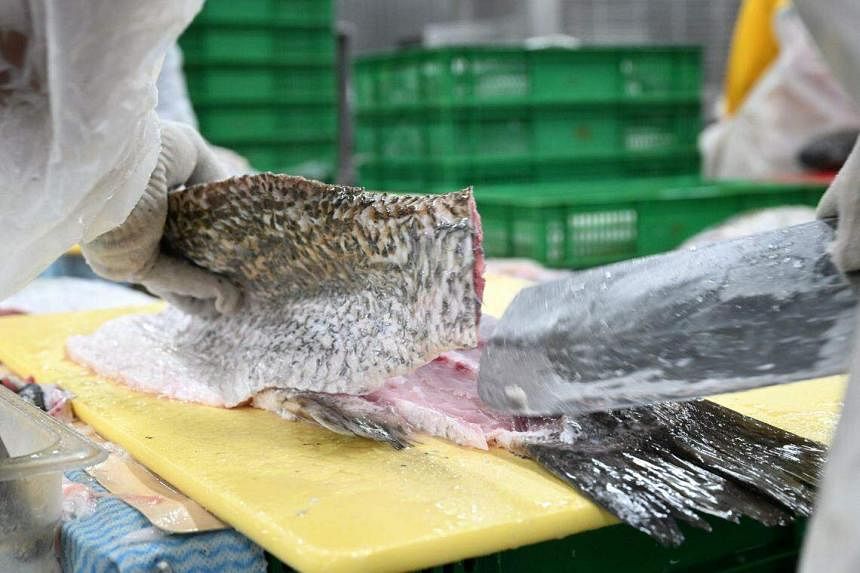
The three farms produce tilapia under the brand The Straits Fish, which is processed by distributor Hai Sia Seafood, and cooked by food service provider Chang Cheng Holdings.
Chang Cheng hopes to add value to the marine tilapia by developing new flavours that highlight its firm texture and mildly sweet taste.
Its food court stall, Ming Kitchen Seafood, is launching four new tilapia dishes on Feb 17 – steamed Hong Kong style, deep fried, steamed with soya bean paste and assam tilapia.
“We came together with a consensus to value-add to the marine tilapia in order to make it comparable to other fishes, so that we have the room to compete,” said Chang Cheng’s spokesman.
